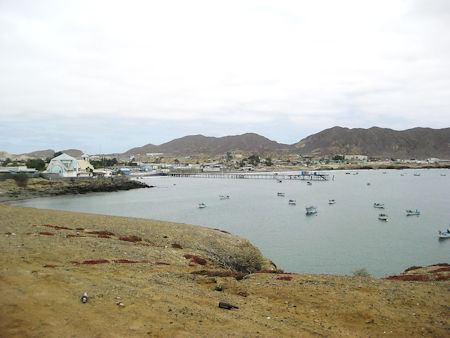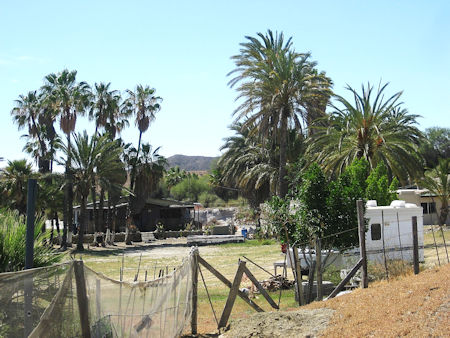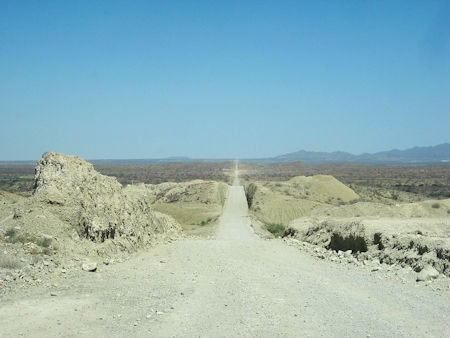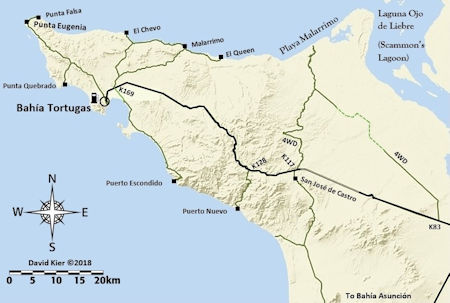 |  |
By David Kier

A look at the map of Baja California will instantly expose the large point or “hook” midway down the long peninsula. This westward-projecting point off from the Baja California peninsula is directly impacted by the south flowing Pacific Current. A beach combing paradise called Malarrimo (Bad-to-be-near, in English) is along the north shore of this long point. Several bays and points with fantastic fishing and surfing are reported along the south facing shore.
A good road, most of which is now paved, extends from Highway 1 at Vizcaíno for 124 miles to the far-west point, beyond Bahía Tortugas. This road also provides access to the vast Vizcaíno Desert, crosses an arm of Scammon’s Lagoon (Laguna Ojo de Liebre), junctions with the paved highway to Bahía Asunción, and the 4x4 roads to Malarrimo Beach. When traveled in 2017, the highway to Bahía Tortugas was in good condition with just 9.2 miles unpaved.
This report begins on Highway 1 at Km. 143.5, in El Vizcaíno, just south of the Pemex gas station. The paved highway goes west and is signed for Bahía Tortugas (and Bahía Asunción). This highway has kilometer markers, but several were missing beyond Km. 97 (60 miles) from El Vizcaíno. The first few miles of highway pass the growing town and outskirts of El Vizcaíno. Named for the Spanish explorer Sebastián Vizcaíno, who in 1602 sailed with three ships and 200 men for a fresh examination of the California Pacific Coast. Sixty years earlier, Juan Rodríguez Cabrillo passed this way but never returned. Vizcaíno would rename many of the bays and points that Cabrillo had already named and most of these newer names are what we use to this day.

Five miles west of Highway 1 is a road south to the original farm using deep wells to irrigate the desert into a food production oasis. This farm was called Rancho de Wilson, named for the American couple who began it in 1959. Today, it is known as El Piloto. The vast desert that is beyond here for many miles has little interest to most travelers. Several roads crisscross the region, and many date back to when Pemex did test drilling for oil in the late 1950’s and early 1960’s. This area is also pronghorn country and was once known as the Antelope Plain (Llano del Berrendo). The Peninsula Pronghorn were originally believed to be a species of antelope.
The paved highway going 24 miles south to Bahía Asunción is reached at Km. 75. Continuing west towards Bahía Tortugas a faint road heads northwest at Km. 83. This is where a water pipe runs underground. The service road along it is used by four-wheel-drive vehicles to reach Malarrimo Beach. This road is covered by drifting sand and should never be traveled without a companion vehicle.
The pavement ends near the 100-kilometer marker point from El Vizcaíno and begins again in just over 9 miles. The road is wide, graded, and easy to travel in most vehicles. Just 0.2 mile after the paving begins again is the original road north to Malarrimo Beach. It has always been suitable only for four-wheel-drive vehicles. In 2017, this road was nearly vanished from lack of use, just a mile from the highway. The signed road south to Rancho San José de Castro is 0.3 mile west of the Malarrimo road (0.5 mile from pavement start). This large ranch is 1 mile south of the highway, in an oasis of palms. This side road south continues for 33 more miles to Bahía Asunción. It is a graded road but may be a bit rough for passenger cars.

At Kilometer 128.5 (11 kilometers west of San José de Castro road) is the road south to Puerto Nuevo and Rancho El Tangaliote. Camping with cabins is available at Cabañas El Huerto. The final kilometer marker is Km. 168, just 4 kilometers before reaching the entrance to Bahía Tortugas. About where Km. 169 would be, is a road south to the coast, following it on to a fish camp called Puerto Escondido. A half kilometer ahead on the highway is a road north to some fish camps, including El Queen and Malarrimo.
The entrance to Bahía Tortugas (Turtle Bay) is about Km. 172. The attraction is a sheltered, natural harbor with a long history as a safe port in all weather. In 1542, Cabrillo named the bay Puerto San Pedro. In 1602, Vizcaíno renamed it Puerto San Bartolomé (a name that still appears on some charts). Japanese abalone fishermen established a colony here from about 1900 to 1920. Mexican fishermen began living here in the 1940’s. Today, Bahía Tortugas is a large town with two Pemex gas stations, a paved airstrip, restaurants, and motels. An interesting cemetery with the appearance of a miniature village is out near the viewpoint of the bay and town, to the southwest.

To continue west to Punta Eugenia (16 miles) and beyond, take the street going west where the town’s entrance road becomes divided (just south of the first Pemex station). This is an excellent graded road once you get away from town. The first cross street on this road is the route to see the cemetery, it passes the second Pemex station.
The mostly paved highway from El Vizcaíno, with well-graded dirt sections, allow for easy access to see this far flung hook of central Baja California.
About David
David Kier is a veteran Baja traveler, author of 'Baja California - Land Of Missions' and co-author of 'The Old Missions of Baja and Alta California 1697-1834'. Visit the Old Missions website.